What is COP26, who will attend it and why does it matter?
By Tricia Curmi
Share
Last updated:
1. What is the UNFCCC?
2. What is the Paris Climate Agreement?
3. Why does COP26 matter?
4. What is COP26, who will be there and what will happen?
5. Could COP26 go on-line?
6. How can I attend COP26?
1. What is the UNFCCC?
The United Nations Framework Convention (UNFCCC) was established at the first Rio Earth Summit in 1992, the sister Convention to the Convention on Biodiversity. A short history and timeline of the UNFCCC, including from the Rio Summit, the Kyoto Protocol and to the Paris Climate Change Agreement is presented here.
The UNFCCC has over 200 countries who are ‘party’ to the Convention. The Parties to the Convention meet every year (with the exception of 2020 due to Covid-19) at the Conference of the Parties (COP). The meeting of the UNFCCC in Glasgow in November 2021 will be COP26.
The UNFCCC established agreements between the Parties to act on climate change. The first agreement was the Kyoto Protocol, which sets binding emission reduction targets for 36 industrialised countries and the European Union. Overall, these targets add up to an average of 5 per cent emission reduction compared to 1990 levels over the five-year period of 2008–2012. The second phase ran from 2013 to 2020, with Parties committing to reduce GHG emissions by at least 18 per cent below 1990 levels; however, fewer countries made commitments to this second phase. The USA was notably absent from both phases of the Kyoto Protocol.
The UNFCCC takes scientific guidance from the Inter-governmental Panel on Climate change (IPCC), who present their Assessment Reports (AR) every five years, with AR6 due out in 2021/22. The IPCC produced a special report on keeping global temperature rise to 1.5oC in 2018, showing the significant difference between a 1.5oC rise and a rise of 2oC, and the dramatic risk of exceeding both these goals. It also recommended a global ‘net zero’ emissions target by 2050.
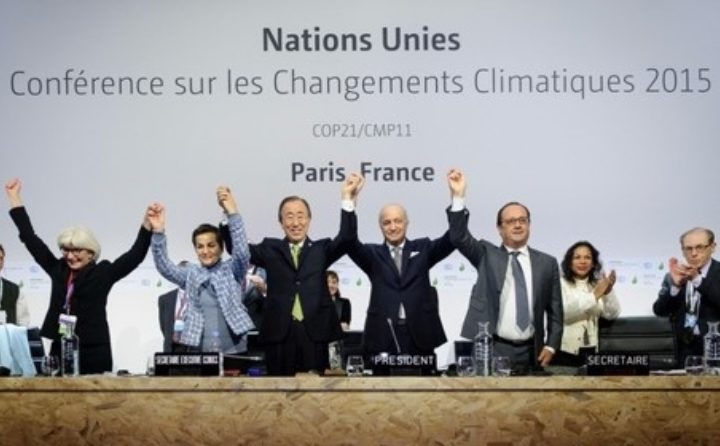
2. What is the Paris Climate Agreement?
The 2015 UN climate conference in Paris (COP21) opened with the largest gathering of world leaders in history, and closed with the adoption of the Paris Agreement: a new global accord on tackling climate change. The Paris Agreement, which measures take effect in 2020, is distinctly different from the Kyoto Protocols, as it calls for action from all 195 signatory countries and not just the industrialised nations. In addition to mitigation (cutting green house gas emissions) it also agrees action on adaptation (responding to the impacts of climate change) and loss and damage (response to climate catastrophe); it also agrees that wealthier nations should provide finance and technology to help poor and vulnerable countries to take action.
At Paris the countries made pledges to implement the Paris Agreement through ‘Nationally Determined Contributions’ which set national targets for reducing greenhouse gas emissions by either 2025 or 2030. These will be reviewed every 5 years through a stocktake process.
The Paris Agreement is also different in that the USA is a signatory, however President Trump has withdrawn his support and the US will be exiting from the Agreement on the 4th of November 2020. If Joe Biden wins the election, the USA would re-enter the Agreement.
3. Why does COP26 matter?
In the context of the Coronavirus and recovery from global recession, climate change continues to impact, and climate risks are increasing around the world.
Three components will make a successful COP26:
- what happens in the year before COP26 to advance climate ambition;
- how successful the official negotiations are at COP26, including the high level segment with Heads of State and Ministers from around the world; and
- what progressive coalitions and alliances emerge for action on climate change to implement the Paris agreement successfully.
In advance of COP26:
All Parties to the Paris Agreement are requested to submit updated pledges (Nationally Determined Contributions, NDCs) during 2020, setting tougher targets for reducing emissions by 2030. How many governments do so during 2020, or ahead of the summit in 2021 will be a key test of the effectiveness of the Paris Agreement. In February 2021 the UNFCCC will produce a synthesis report which will assess whether enough progress is being made on increasing the ambition in the NDCs. So far developing countries are coming forward with improved NDCs, and the UK and EU are expected to present their enhanced NDCs by December 2020.
2020 is also the year when the wealthy nations are due to deliver the target of $100bn a year in climate finance. The UNFCCC is expected to make a review whether this has been achieved ahead of COP26.
Official negotiations
The official negotiations take place over two weeks. The first week is primarily technical negotiations by government officials. The second week is dominated by the high level Ministerial and Heads of State meetings. The most challenging issues of the negotiations go to the Ministers to make the final negotiated decisions.
There are several technical issues to be finalised at COP26, this includes some difficult sticking points which were carried over from COP26 in Madrid in 2019. Issues which will be brought to COP26 include:
- Carbon market mechanisms, which would allow countries to purchase carbon credits (reductions) from another country to allow the purchasing country to continue to emit within its borders. Carbon markets may also include trade in ‘negative’ emissions such as carbon absorption through forestry. There are very diverse views from Parties on the extent and rules for these markets.
- Funding for Loss and damage: While Loss and damage is a core part of the Paris Agreement there is no mechanism as yet within the UNFCCC to fund responses when vulnerable countries experience loss and damage. This is viewed as a critical factor by LDCs to unlock the negotiations but is resisted by many wealthy nations.
- Discussions over the delivery of the $100 bn finance target are likely, and again will be a critical factor for less developed countries. Additionally, COP26 is likely to set the next target for climate finance to be achieved by 2025.
- An increasingly important aspect of the climate debate is around ‘nature-based solutions’ (NBS). That is how nature (forests, agriculture and ecosystems) can become a climate solution for absorbing carbon and for protecting against climate impacts. COP26 will start to discuss how to integrate NBS into the Paris implementation strategy.
- The other element of the 'Paris rulebook' which requires agreement is on common timeframes for countries' NDCs - whether those timeframes should be five years or ten years. The shorter timeframe means revision of NDCs more frequently, potentially driving greater ambition than if they were only revised every decade.

Coalitions and alliances
In addition to the formal negotiations, COP26 is expected to establish a number of new initiatives for delivering climate action. The UK helped set up the Powering Past Coal Alliance at COP24, which aims to increase countries pledging ambition to eliminate coal power nationally. The UK is also a member of the High Ambition Coalition of countries that have set targets for net zero emissions by 2050.
The UK Presidency at COP26 has five priorities, aiming to ignite a similar level of progress through new alliances. COP26 president Alok Sharma outlined his priority actions areas for COP26:
- Adaptation and resilience: ‘Helping people, economies and the environment adapt and prepare for the impacts of climate change.’
- Nature: ‘Safeguarding ecosystems, protecting natural habitats and keeping carbon out of the atmosphere.’
- Energy transition: ‘Seizing the massive opportunities of cheaper renewables and storage.’
- Accelerating the move to zero-carbon road transport: ‘By 2040, over half of new car sales worldwide are projected to be electric.’
- Finance: ‘We need to unleash the finance which will make all of this possible and power the shift to a zero-carbon economy.’
Of course, climate action does not only happen in the negotiating halls, and in the months up to COP26 the UK government will have many opportunities to use its diplomatic power and influence to underpin the success of international climate action.
4. What is COP26, who will be there and what will happen?
Assuming that the Covid-19 pandemic is under control by November 2021, COP26 will happen as follows in Glasgow (see question 5 for Covid-19 concerns).
Taking place at the Scottish Events Campus (SEC), the City of Glasgow will act as official host to the COP26 delegations. It will involve upwards of 30,000 people in the city, representing over 200 countries, businesses, NGOs, faith groups and many more.
While the Scottish Government will have a strong presence at COP26 it has no formal role in hosting or running the event.
There are three components to a COP: the negotiations; exhibitions and side events; and the events around the city.
4.1 The negotiations
Key negotiations will take place in the plenary halls, side meeting rooms and Party offices.
Key players on the inside:
- President (UK with Italy) –
The UK will host the 26th UN Climate Change Conference of the Parties (COP26) in Glasgow, with Italy hosting a number of key preparatory events such as a Youth Event and the Pre-COP Summit.
Rt Hon Alok Sharma MP, Secretary of State of Business, Energy and Industrial Strategy will be COP26 President and will preside over the COP26 negotiations.
The Presidency works in close collaboration with the UNFCCC secretariat to set up ad run the COP.

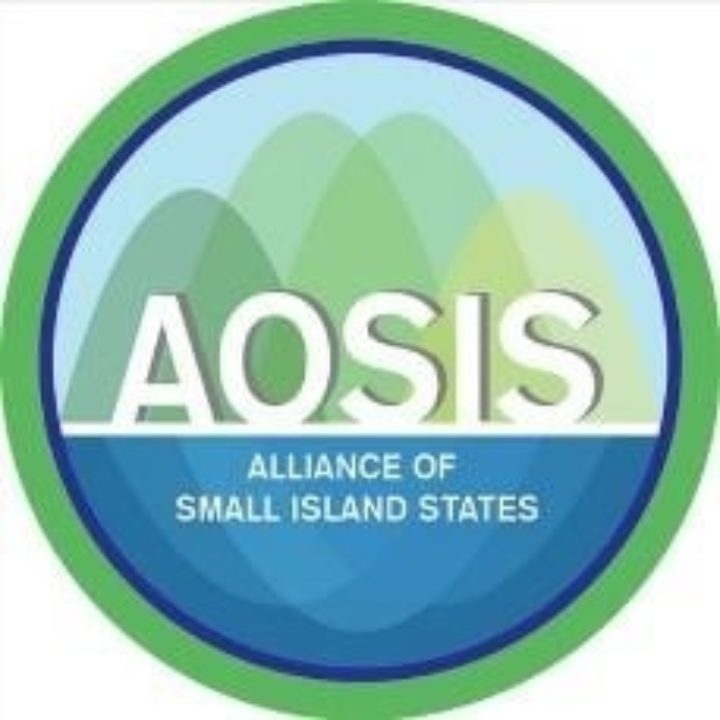
- Parties/blocks
There are 197 ‘Parties’ to the UNFCCC, that is member stated of the UN plus the ‘supranational’ European Union. All members of the EU act as one delegation in the negotiating space. COP26 will be the first time the UK will act at the UNFCCC as a nation state and not as part of the EU delegation. It is the Parties who negotiate and make the decisions and agreements that fall under the UNFCCC. Often Parties act in ‘blocks’ or groupings to negotiate jointly, these include:
- ‘G77 plus China’ is a grouping of developing and middle income countries
- Africa Group
- Least Developed Countries (LDCs)
- Climate Vulnerable Forum (CVF)
- ‘Umbrella’ Group is a loose coalition of non-EU developed countries which includes Australia, Canada, Japan, New Zealand, the Russian Federation, and the US.
- Small Island Developing States (SIDS) and Alliance of Small Island States AOSIS
- AILAC Independent Alliance of Latin America and the Caribbean
- BASIC – Brazil, South Africa, India and China (middle income countries)
- Arab Group
However, there are also groupings of countries who form progressive alliances across these groups to ensure there is momentum towards achieving ambitious goals, such as the High Ambition Coalition, or the Climate Ambition Alliance.
Ad hoc alliances also occasionally emerge between parties with a joint agenda, for example on human rights or gender issue. Sometimes this results in the joining of unlikely countries working work together to ensure certain decisions or outcomes.
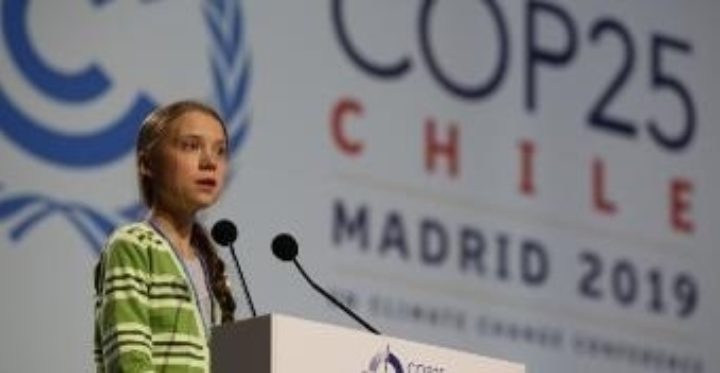
- Observers
Observers have no formal part in the negotiations but do occasionally make interventions to the negotiating process. However, the presence of observers maintains a level of transparency to the negotiations and provides a wider stakeholder review of the progress of the negotiations. The observer groups are categorised by the UN as follows:
The United Nations System and its Specialized Agencies, such as UN Development Programme (UNDP), World Health Organisation (WHO) and UN Environment Programme (UNEP).
Intergovernmental organizations (IGOs), such as the OECD, OPEC or the International Energy Agency (IEA).
Non-governmental organizations (NGOs), which are made up of 9 UN ‘Major Groups’ defined at the Rio Earth Summit (1992)
- ENGOs (environmental NGOs)
- BINGOs (business and industry)
- RINGOs (research community)
- YOUNGOs (youth)
- TUNGOs (trade unions)
- Indigenous peoples
- Local Authorities
- Women
- Farmers
Faith interventions
- The Holy See (central governing body of the Catholic Church)
- Islamic leaders
Since 2016 the UNFCCC secretariat also recognises the following groups as informal NGO groups:
- Faith Based Organizations (FBOs);
- Education and Capacity Building and Outreach NGOs (ECONGO);
- Parliamentarians.
Press: Registered press and media outlets also have representatives inside the Conference Hall, with a dedicated press office and press conference rooms for press briefings.
4.2 The exhibitions and side events
The official negotiations attract a wide range of stakeholders to the venue, creating in effect a parallel conference and exhibition. This allows for exchange of ideas and promotion of innovations to an international audience.
There are two official venues for side events and exhibitions, one on the inside of the negotiating halls which is restricted to delegations (see question 6), and the other in the ‘Green Zone’ which is a bigger space accessible to much wider participation.
- Side events
- Country pavilions
- Observer and commercial exhibition and event
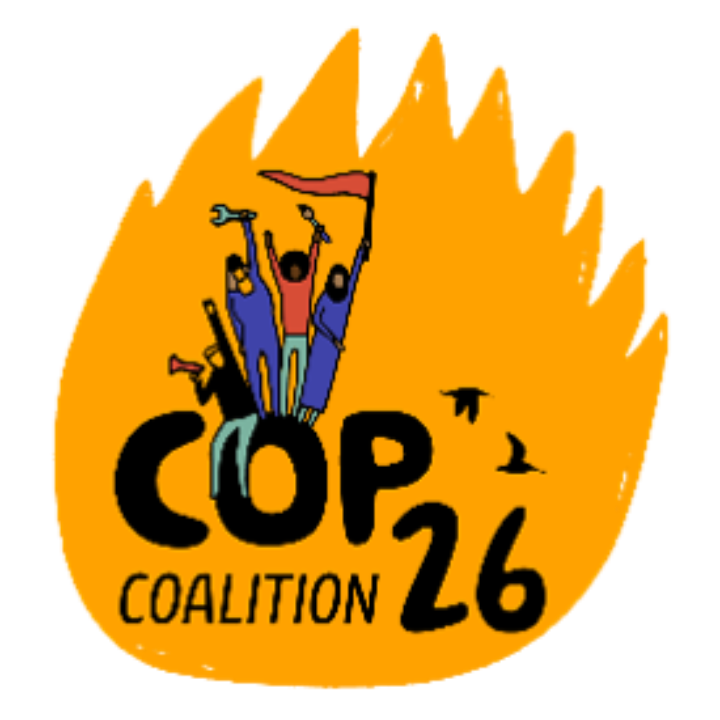
4.3 The City as a stage for climate action
The City of Glasgow is likely to have its own exhibitions and events and the Scottish Government will have its own venue outside the official COP26 arena. Many businesses, academics, and NGOs will use the city for side meetings, conferences, events, and stunts. It is expected that there will be a major march through the city, and other demonstrations.
5. Could COP26 go on-line if we have a new wave of Covid-19, or to reduce the amount of flying to get to Glasgow?
The developing countries and most vulnerable countries are very reluctant to hold major negotiations online for a few reasons:
- Many least developed countries have poor reliability and quality of internet access, so would be instantly at a disadvantage.
- Online negotiations would make it more difficult to engage in the negotiating blocks which give them leverage when facing powerful nations such as the US and EU. For example, the Alliance of Small Island States (AOSIS) and most vulnerable group (MVG) rely on person to person meetings to agree block positioning.
- Much of the real negotiations takes place behind the scenes in smaller rooms and meeting groups and many smaller countries could be cut out if meetings are exclusively online.
In addition, the engagement of observer (non-state) groups such as NGOs, academics and business groups has enhanced the conference over the years ensuring a level of scrutiny, robustness, and transparency to the negotiations.
Covid-19 may require COP26 to be much reduced in size, a ‘mini-COP’, which only allows negotiators plus limited access for non-state actors. This would exclude side events and exhibition areas and severely restrict the civil society space. This decision will be made between the UNFCCC secretariat and the UK COP26 presidency nearer the date.
6. How can I attend?
Assuming it is a full COP26, with few restrictions from Covid-19, there are many ways to get involved. There are three key areas to take part:
- The COP26 negotiating halls, with restricted access to delegations from Parties and registered observer organisation. This is the official space for the negotiating teams, the plenary sessions, and the national offices. There are registered side events, small exhibition stands and opportunities for the observer groups to engage with the Parties and official media outlets.
- To be in the negotiating space you need either to be attached to the national delegation, a registered media participant or part of a registered observer delegation. Each observer organisation who applies to attend COP26 will be allocated a quota for the number of participants. Official side events and exhibition stands for the negotiation area have to be applied for through the UNFCCC website in summer 2021.
- The official ‘green zone’ which is much more widely accessible to a wider attendance, though participants should apply in advance for access, keep an eye on the official web pages for details. This provides exhibition space, meeting rooms and events space, country pavilions and much more.
- Finally, the City of Glasgow will offer many venues for meetings, events, and exhibitions. There is expected to be marches, stunts, and protests across the city. It will be a very lively time to be in Glasgow. Stop Climate Chaos Scotland (SCCS) will coordinate a number of civil society venues across the city.
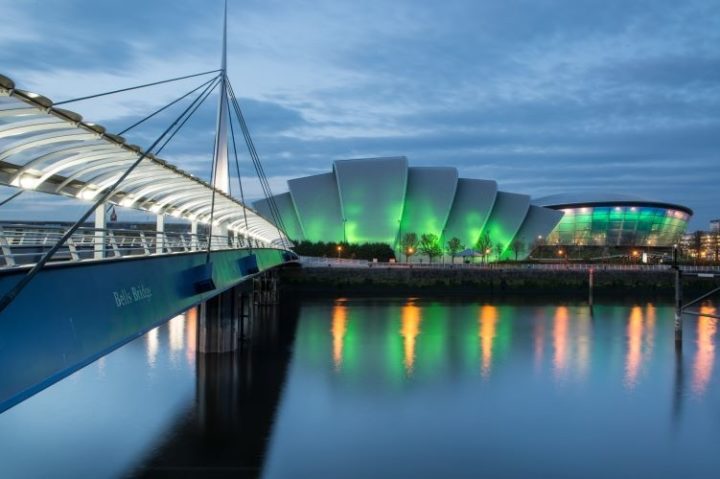
Share